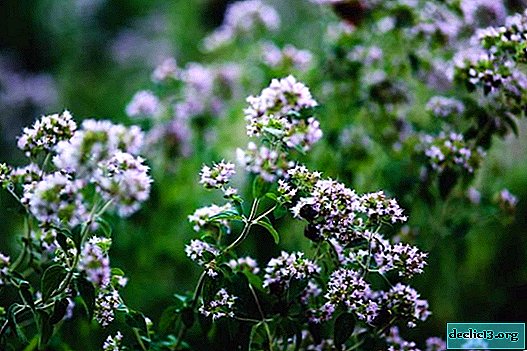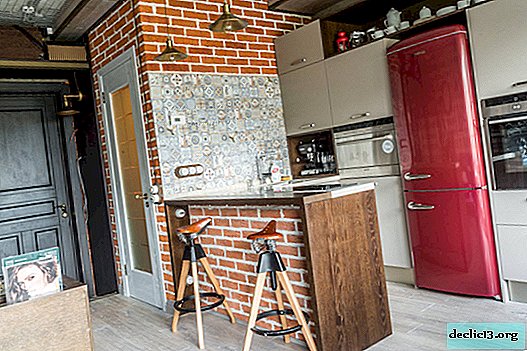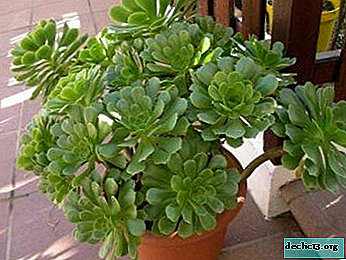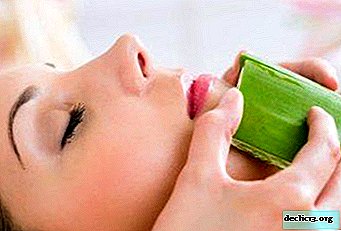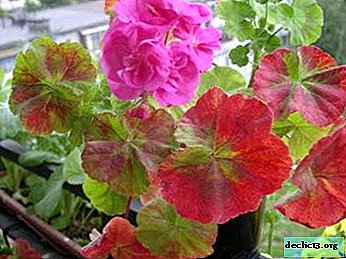Exotic handsome streptocarpus - growing and care for plentiful flowering
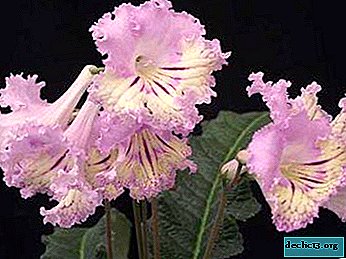
Today, among flower growers, streptocarpuses are in demand. These are plants of the Gesneriev family.
In nature, the plant is found in forests and on hillsides in Africa and Asia. They can be either annuals or perennials. Flowers are distinguished by attractive appearance and simplicity in terms of care, cultivation.
Next, find out what they are, how to achieve constant flowering and fight pests. And also, the secrets of planting and breeding.
Plant features
Feature of the culture in the form of fruits. They look like a spiral-curved seed box. Due to this form, the plant was called "streptocarpus", which is translated from Greek as "twisted box." The leaves are elongated and collected in a basal rosette. Size reaches 30 cm. The number of leaves depends on the type of flower. One variety of streptocarpus has many sheets, and the other only one. Color is green and colorful.
Streptocarpus flowers come in three forms:
- terry;
- semi-double;
- simple.
The color of flowers is replete with variety. Each grower can plant a plant in the following colors:
- white
- yellow;
- all shades of red and blue colors;
- lavender;
- velvety purple;
- black ones.
There are hybrids in which the two-color petals are covered with dashes, dots or a pattern. You can grow varieties with fancy color of 3-4 flowers. The shape of the petal is different, but the edges are wavy or rounded.
Flowering streptocarpus lasts from spring to autumn. If the flower is provided with additional illumination, then it will delight with its colorful flowering all year round. This is achieved by exiting from the sinus of each leaf up to 10 peduncles, on which several flowers can concentrate.
Photo
See below for color photos and highlights of the plant.





How to care for this flower?
Consider how to properly care for a plant so that it grows and develops quickly.
Soil and fertilizers
The earth for the plant needs loose, air- and moisture-permeable. A substrate for violets is perfect. Add a little perlite or peat to it. With self-preparation of the soil mixture, you can use the following recipes:
- Deciduous land, peat, sand (2: 1: 1).
- Peat, perlite, sphagnum moss - in equal parts.
- Deciduous humus, bark, peat, sand - in equal proportions.
Add a little chopped charcoal to the prepared substrate. Thanks to it, stagnation of water in the soil and decay of the root system is prevented.
For the cultivation of streptocarpus, you can use a mixture of peat and vermiculite, taken in equal proportions. If you plant a plant in only one peat, then you need to consider that watering should be frequent. Otherwise, peat will turn into a monolithic dry piece.
Reference! Sterilize the purchased substrate or prepared independently before use for planting. To do this, keep him in the oven for 15 minutes.From spring to autumn, streptocarpus requires regular feeding. Perform them every 7-10 days. Suitable liquid complex formulations for flowering indoor plants. For this culture, you can alternate potassium and nitrogen products. Only reduce the dosage indicated on the package by 2 times. In winter, feeding is not required.
 Regular fertilizer application will allow you to achieve beautiful and abundant flowering.
Regular fertilizer application will allow you to achieve beautiful and abundant flowering.
Young plants that have been recently rooted should be fertilized with nitrogen compounds. In the formation of buds, mixtures with a predominance of potassium and phosphorus are used. You can buy ready-made fertilizers:
- The new ideal.
- Violet.
- Supercolors.
- Kemira Suite.
Make nutrient formulations only in moist soil, preferably after watering. This will avoid burns to the roots of the plant.
Pruning
In order for the plant to give as many peduncles as possible, regular pruning is necessary. To do this, remove the lower old leaves, as they take away strength and nutrients from the flower.
Watering
To moisturize, use soft, settled or melt water. Her temperature should be room temperature. A plant suffers a lack of moisture better than an excess. So pouring streptocarpus is undesirable, since it will die from this.
Humidification should be moderate. The next watering should be done only after the middle layer of soil in the pot has dried out. The best option - watering from a pallet or along the edge of the pot. Half an hour after wetting, remove the remaining liquid from the sump.
Important! When watering, make sure that water does not penetrate leaves and flowers.Humidity
For successful flower cultivation, it is necessary to maintain humidity in the region of 50-70%. To achieve this, place water containers near the flower. Moisturize the aerial parts of the plant is strictly prohibited.
Temperature
 Streptocarpus responds positively to heat. In summer, the optimum temperature is 20-25 degrees. With increasing temperature, the air humidity is proportionally increased: in winter, for ordinary plant varieties, the temperature will be 15-18 degrees, for hybrid varieties - 18-20 degrees. It is important not to allow the temperature to drop below 13 degrees, and for hybrids - 16 degrees.
Streptocarpus responds positively to heat. In summer, the optimum temperature is 20-25 degrees. With increasing temperature, the air humidity is proportionally increased: in winter, for ordinary plant varieties, the temperature will be 15-18 degrees, for hybrid varieties - 18-20 degrees. It is important not to allow the temperature to drop below 13 degrees, and for hybrids - 16 degrees.
Drafts are disastrous for a flower, so it is important to protect him from them. Under the open sky, making pots is not recommended, as the plant feels comfortable in room conditions.
Transfer
The best time to transplant streptocarpus is February. Regardless of age, the flower needs an annual transplant. The best way to transplant a streptocarpus is through transshipment. The plant does not tolerate deep penetration into the ground. The best option is to the root neck.
A plant transplant has the following features:
- Capacity for the flower should be wide, but shallow. This is due to the structural features of the root system.
- For the plant, drainage is important, which must be updated every year. You can use polystyrene or expanded clay.
- A flower transplant is carried out in plastic pots. This is due to the fact that the thin roots of the plant can penetrate into the pores of the walls of the clay container, and will be damaged during transplantation. The new pot should be 1-3 cm larger in diameter than the previous one.
- If during the transplant the overgrown plant has “children”, then divide it into parts with roots and plant it in separate containers.
- After transplanting, perform upper watering for 1-2 weeks, and then lower one into the pan.
Propagation and planting at home
The process of planting and growing crops requires the following conditions:
- Replace newly acquired young specimens 2 weeks after purchase. To do this, use a transparent container. This will further monitor the development of the root system.
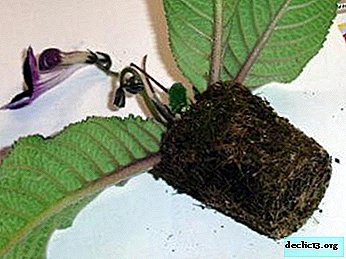 For successful cultivation, plant a flower in shallow containers. This will provide lush flowering and green growth. The larger the number of growth points for a plant, the more it will produce peduncles.
For successful cultivation, plant a flower in shallow containers. This will provide lush flowering and green growth. The larger the number of growth points for a plant, the more it will produce peduncles.- Young specimens must be looked after correctly. Initially, such plants should build up green mass, and only then bloom. So it is recommended to cut off the resulting peduncles.
- Properly selected temperature conditions, air humidity and system watering will allow you to grow and reproduce a beautiful decorative-flowering culture.
Recommendations for planting and germinating seeds
Reproduction by seeds is called generative. This process is simple, but involves following certain recommendations:
- Planting stock is sown from above onto a moist substrate. It consists of perlite, ground peat and vermiculite, taken in equal proportions.
- Seeds can be mixed with sand. It should be dry and shallow.
- After sowing, carefully sprinkle planting material with water from the sprayer. Cover the container with polyethylene.
- Place a container with seedlings in a warm and bright place.
- Expect shoots must be in 12-14 days.
- Ventilate the mini-greenhouse every day to prevent condensation.
- As soon as the seedlings appear 2 leaves, then you can begin to pick. To do this, prepare a nutrient substrate: peat, chopped moss, leafy earth, vermiculite, perlite: 3: 2: 2: 1: 1. Instead of the prepared substrate, a purchased one intended for the senpolia is also suitable.
Reproduction of streptocarpous seeds:
Diseases and their treatment
The main diseases of streptocarpus remain:
- Sulfur rot. The disease is formed due to constant dampness and low temperatures. Presented in the form of a gray fluffy coating, which "eats through" the sheet through.
- Powdery Mildew It can be recognized by the presence of a whitish coating. It penetrates the leaves, stems, flowers. The main cause of the disease is poor ventilation of the room.
The following pests affect the flower:
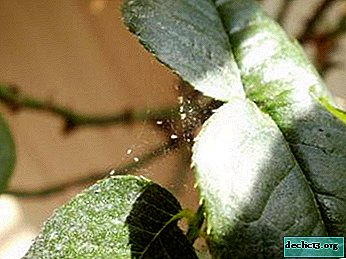 Aphid. This is a small insect that feeds on plant lope. These parasites are prone to rapid reproduction. Disappear with the death of the flower. the presence of aphids can be determined by the presence of many white dots on the leaves and stem.
Aphid. This is a small insect that feeds on plant lope. These parasites are prone to rapid reproduction. Disappear with the death of the flower. the presence of aphids can be determined by the presence of many white dots on the leaves and stem.- Mealybug. It is difficult to determine the presence of this insect, but their colonies form a white mass. It is very difficult to deal with them.
- Weevil. This insect lays the larvae at the base of the stem. They eat the plant, resulting in its withering and death.
- Sciriades fly. These insects crawl along the ground and eat thin young roots, damaging the entire root system.
- Cyclamen tick. Under its influence, the leaves become spotty or rusty. It is very difficult to cure a plant.
More information about the diseases and pests of streptocarpus can be found here.
Caring for streptocarpus is a series of measures during which the plant will respond with long, lush flowering and impeccable health. This process is simple, so even a beginner can cope with it. And using several varieties for growing, you can create a real flower arrangement right at home.
Useful video
Streptocarpus. Care, reproduction, pests:

 For successful cultivation, plant a flower in shallow containers. This will provide lush flowering and green growth. The larger the number of growth points for a plant, the more it will produce peduncles.
For successful cultivation, plant a flower in shallow containers. This will provide lush flowering and green growth. The larger the number of growth points for a plant, the more it will produce peduncles. Aphid. This is a small insect that feeds on plant lope. These parasites are prone to rapid reproduction. Disappear with the death of the flower. the presence of aphids can be determined by the presence of many white dots on the leaves and stem.
Aphid. This is a small insect that feeds on plant lope. These parasites are prone to rapid reproduction. Disappear with the death of the flower. the presence of aphids can be determined by the presence of many white dots on the leaves and stem.